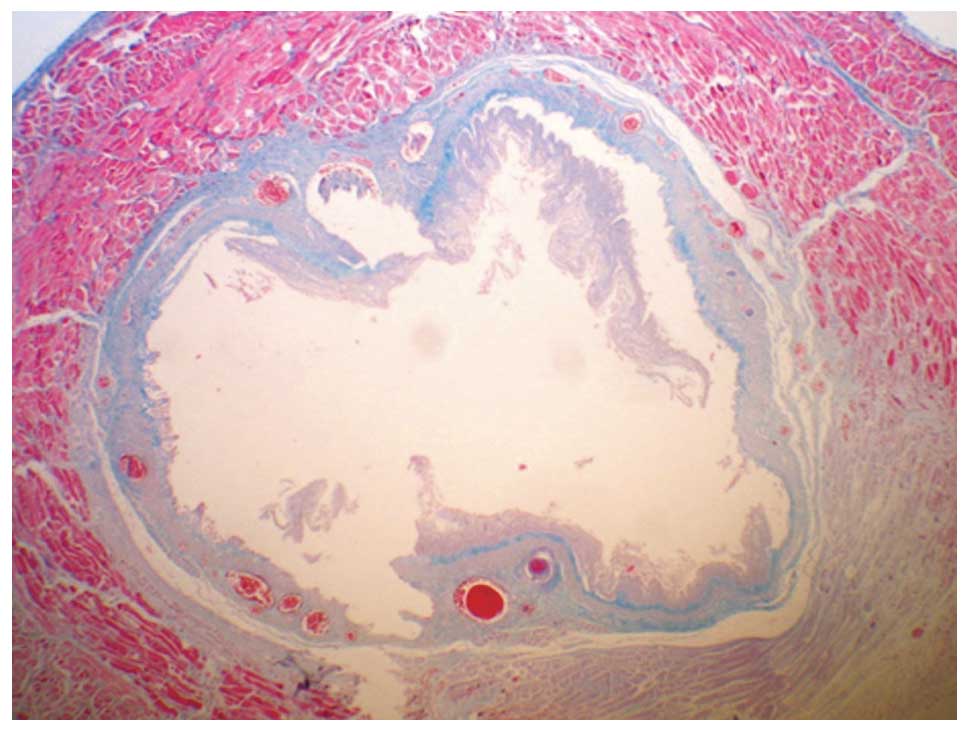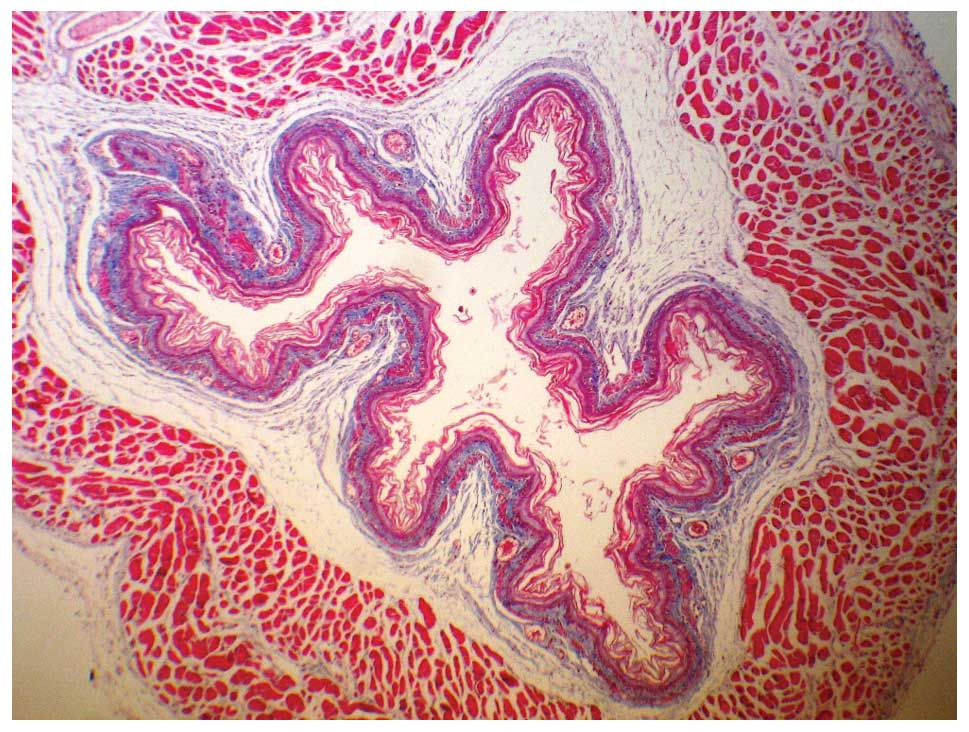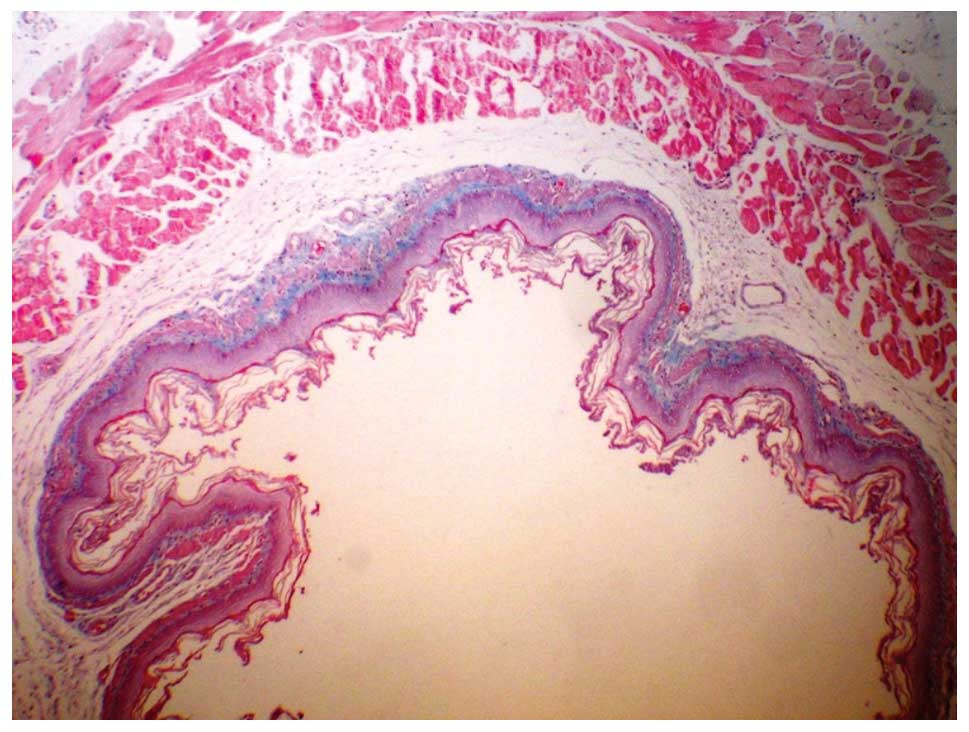|
1
|
Millar AJW and Cywes S: Caustic strictures
of esophagus. Pediatric Surgery. O’Neill JJ, Rowe MI, Grosfeld JL,
et al: Mosby; St Louis, MO: pp. 969–979. 1998
|
|
2
|
Tiryaki T, Livanelioğlu Z and Atayurt H:
Early bougienage for relief of stricture formation following
caustic esophageal burns. Pediatr Surg Int. 21:78–80. 2005.
View Article : Google Scholar : PubMed/NCBI
|
|
3
|
Han Y, Cheng QS, Li XF and Wang XP:
Surgical management of esophageal strictures after caustic burns: a
30 years of experience. World J Gastroenterol. 10:2846–2849.
2004.PubMed/NCBI
|
|
4
|
Anderson KD, Rouse TM and Randolph JG: A
controlled trial of corticosteroids in children with corrosive
injury of the esophagus. N Engl J Med. 323:637–640. 1990.
View Article : Google Scholar : PubMed/NCBI
|
|
5
|
Cakmak M, Nayci A, Renda N, Erekul S,
Gökçora H and Yücesan S: The effect of corticosteroids and
pentoxifiline in caustic esophageal burns. Int Surg. 82:371–375.
1997.PubMed/NCBI
|
|
6
|
Ekingen G, Ozden M, Sözübir S, Maral H,
Müezzinoğlu B, Kahraman H and Güvenç BH: Effect of the prostacyclin
derivate iloprost in experimental caustic esophageal burn. Pediatr
Surg Int. 21:441–444. 2005. View Article : Google Scholar : PubMed/NCBI
|
|
7
|
Beawen AW and Shea TC: The effect of
palifermin on chemotherapy and radiation therapy induced mucositis:
A review of the current literature. Support Cancer Ther. 4:188–197.
2007. View Article : Google Scholar
|
|
8
|
Werner S: Keratinocyte growth factor: a
unique player in epithelial repair processes. Cytokine Growth
Factor Rev. 9:153–165. 1998. View Article : Google Scholar : PubMed/NCBI
|
|
9
|
Radtke ML and Kolesar JM: Palifermin
(Kepivance) for the treatment of oral mucositis in patients with
hematologic malignancies requiring hematopoietic stem cell support.
J Oncol Pharm Pract. 11:121–125. 2005. View Article : Google Scholar : PubMed/NCBI
|
|
10
|
Gehanno G and Guedon C: Inhibition of
experimental esophageal lye strictures by penicillamine. Arch
Otolaryngol. 107:145–147. 1981. View Article : Google Scholar : PubMed/NCBI
|
|
11
|
Liu AJ and Richardson MA: Effects of
N-acetylcysteine of experimentally induced esophageal lye injury.
Ann Otol Rhinol Laryngol. 94:477–482. 1985.PubMed/NCBI
|
|
12
|
Berthet B, Di Costanzo J, Arnaud C, et al:
Influence of epidermal growth factor and interferon gamma on
healing of oesophageal corrosive burns in the rat. Br J Surg.
81:395–398. 1994. View Article : Google Scholar : PubMed/NCBI
|
|
13
|
Temir ZG, Karkınel A, Karaca I, Ortaç R
and Ozdamar A: The effectiveness of sucralfate against stricture
formation in experimental corrosive esophageal burns. Surg Today.
35:617–622. 2005. View Article : Google Scholar : PubMed/NCBI
|
|
14
|
Kiyan G, Aktas S, Ozel K, Isbilen E,
Kotiloglu E and Dagli TE: Effects of hyperbaric oxygen therapy on
caustic esophageal injury in rats. J Pediatr Surg. 39:1188–1193.
2004. View Article : Google Scholar : PubMed/NCBI
|
|
15
|
Günel E, Cağlayan F, Cağlayan O, Canbilen
A and Tosun M: Effect of antioxidant therapy on collogen synthesis
in corrosive esophageal burns. Pediatr Surg Int. 18:24–27.
2002.PubMed/NCBI
|
|
16
|
Koltuksuz U, Mutuş M, Kutlu R, Ozyurt C,
et al: Effects of caffeic acid phenethyl ester and epidermal growth
factor on development of caustic esophageal stricture in rats. J
Pediatr Surg. 36:1504–1509. 2001. View Article : Google Scholar : PubMed/NCBI
|
|
17
|
Ozçelik MF, Pekmezci S, Saribeyoğlu K, et
al: The effect of halofuginone, a specific inhibitor of collogen
type 1 synthesis, in the prevention of esophageal strictures
related to caustic injury. Am J Surg. 187:257–260. 2004.PubMed/NCBI
|
|
18
|
Wijburg FA, Heymans HS and Urbanus NA:
Caustic esophageal lesions in childhood: prevention of stricture
formation. J Pediatr Surg. 24:171–173. 1989. View Article : Google Scholar : PubMed/NCBI
|
|
19
|
Fell SC, Denize A, Becker NH and Hurwitt
ES: The effect of intraluminal splinting in the prevention of
caustic stricture of the esophagus. J Thorac Cardiovasc Surg.
52:675–681. 1966.PubMed/NCBI
|
|
20
|
Rubin JS, Osada H, Finch PW, Taylor WG,
Rudikoff S and Aaronson SA: Purification and characterization of a
newly identified growth factor specific for epithelial cells. Proc
Natl Acad Sci USA. 86:802–806. 1989. View Article : Google Scholar : PubMed/NCBI
|
|
21
|
Baatar D, Kawanaka H, Szabo IL, et al:
Esophageal ulceration activates keratinocyte growth factor and its
receptor in rats: implications for ulcer healing. Gastroenterology.
122:458–468. 2002. View Article : Google Scholar : PubMed/NCBI
|
|
22
|
Brauchle M, Fässler R and Werner S:
Suppression of keratinocyte growth factor expression by
glucocorticoids in vitro and during wound healing. J Invest
Dermatol. 105:579–584. 1995. View Article : Google Scholar : PubMed/NCBI
|
|
23
|
Panoskaltsis-Mortari A, Taylor PA, Rubin
JS, et al: Keratinocyte growth factor facilitates alloengraftment
and ameliorates graft-versus-host disease in mice by a mechanism
independent of repair of conditioning-induced tissue injury. Blood.
96:4350–4356. 2000.
|
|
24
|
Ellison CA, Natuik SA, Fischer JM, et al:
Effect of recombinant human keratinocyte growth factor (rHuKGF) on
the immunopathogenesis of intestinal graft-vs. -host disease
induced without a preconditioning regimen. J Clin Immunol.
24:197–211. 2004. View Article : Google Scholar
|
|
25
|
Stout A, Gresser I and Thompson WD:
Inhibition of wound healing in mice by local interferon alpha/beta
injection. Int J Exp Pathol. 74:79–85. 1993.PubMed/NCBI
|

















